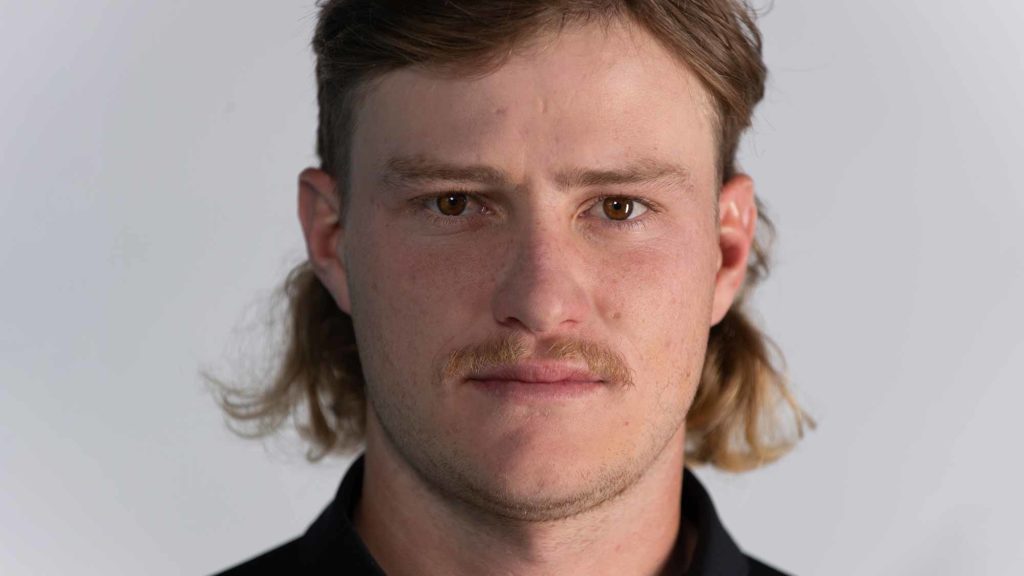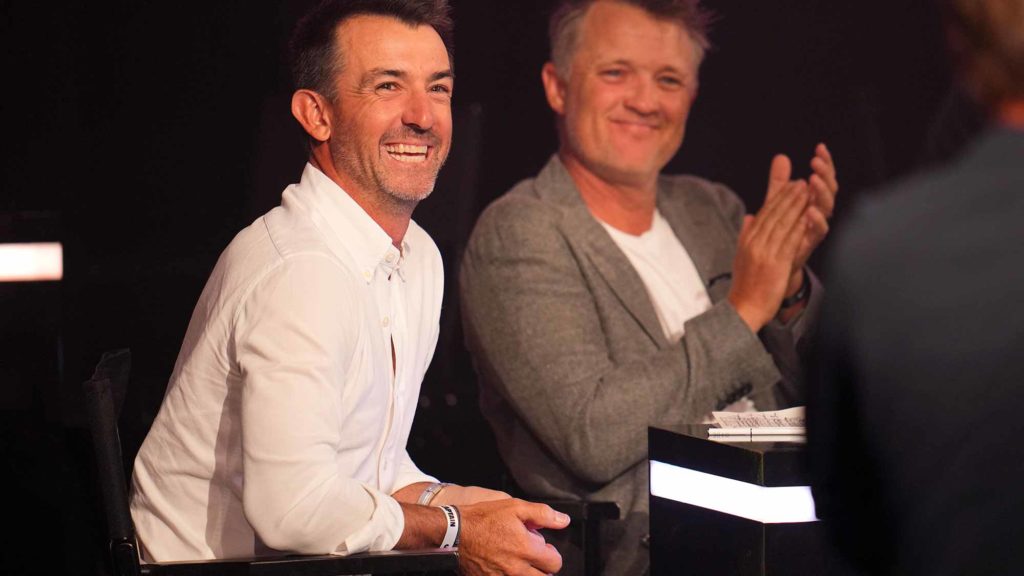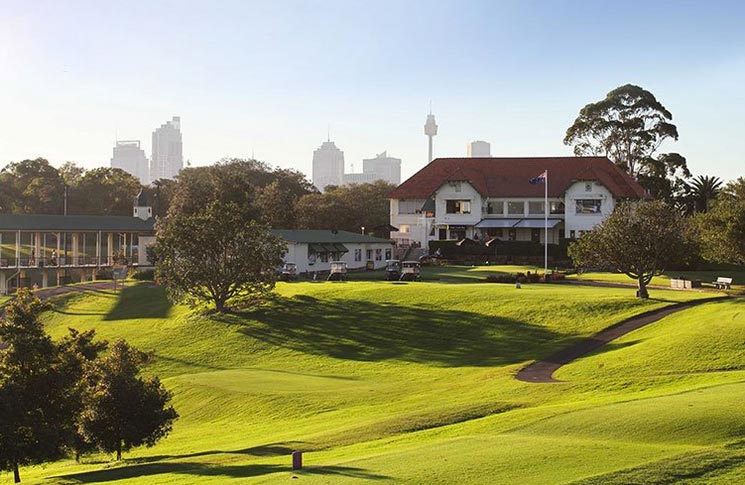Our man on the ground examines the new world order of professional golf, through an Australian lens.
For Australian veteran Wade Ormsby, LIV Golf isn’t just a cash grab for already-rich golf stars like Phil Mickelson and Dustin Johnson. Ormsby, a 42-year-old from Adelaide who’s spent most of his career grafting on the Asian and European tours, tells a story about a career-changing moment he witnessed happen to struggling young Australian pro Kevin Yuan.
Ormsby was playing the Asian Tour event held near Newcastle in England the week before LIV Golf’s debut tournament near London, in early June. Five spots in LIV Golf’s $US25 million opener were on offer in Newcastle after the Asian Tour partnered with LIV Golf, which is funded by the Saudi Arabian government’s investment arm. In the final round at Slalely Hall Resort, Ormsby was paired with Yuan.

“On the last hole, Kevin hit a 7-iron off a downslope in the fairway and he’d probably admit he caught it a bit thin,” Ormsby tells Australian Golf Digest. “His ball ran up the green to about three inches [from the hole] and he tapped in for birdie. Because of that birdie, Kevin won (one of the five spots) from a scorecard playoff.” A week later, Yuan finished tied for 33rd at the LIV event and pocketed $220,000. “The prizemoney is enormous, even for guys like ‘DJ’ (Dustin Johnson) and Charl Schwartzel. But it can also change a career for someone like Kevin.”
Yuan was one of six Australians in the field for the inaugural LIV event at Centurion Club, alongside Ormsby, Matt Jones, Jed Morgan, Travis Smyth and Blake Windred. Given LIV events are capped at 48 players, star recruits such as Bryson DeChambeau, Brooks Koepka and Patrick Reed that signed with LIV after the London event pushed lower-tier players like Yuan out for the second installment in Portland, Oregon. But Yuan and other Asian Tour players will get more opportunities to play their way into future LIV Golf events. The Saudi-backed series injected $US200 million into the Asian Tour in exchange for the latter creating 10 lucrative events called the ‘International Series’.
“My [Asian Tour] season had been a grind,” Yuan says. “I started shakily, coming out of the COVID-19 break and not playing many tournaments. But the London LIV event changed things so much for me; it put me in a spot I couldn’t have dreamed of before that.”

Smyth was in a similar circumstance to Yuan. The 27-year-old from Kiama on the New South Wales South Coast, had been grinding on the Asian Tour before COVID-19 forced its suspension and made travel in and out of Australia wildly difficult. Once the Asian Tour and LIV Golf teamed up, Smyth pounced. He finished second at Slaley Hall for a $US220,000 cheque ($320,000), which was four times any amount he’d ever won from a pro tournament, and an invitation to the London LIV event. In London, Smyth won $US525,000 ($770,000), which was comprised of $US375,000 for his team’s high finish and $US150,000 for his individual tie for 33rd. Smyth banked another $US153,000 ($225,000) from the Portland event. All in all, Smyth collected $US828,000 ($1.2 million) from three weeks. He said he would invest a lot of that back into his travel in the hopes it heightens his performances.
“The money takes a lot of weight off my shoulders, for sure,” he says. “I’ve got a bad back, so now I can fly business class to tournaments. I can’t tell you how many times I’ve turned up to a golf tournament and for the first day or two, I’m nursing a bad back because of the long flight and I couldn’t prepare properly. I’m also now able to pay my golf coach what he’s worth; he’s put a lot of hard work into me and he hasn’t charged me as much as he should have. So, it’s going to feel good, rewarding him for that.”
But it wasn’t just about money for Smyth. He said rubbing shoulders with multiple Major winners like Koepka and Johnson inspired him to work harder. “We play in Australian Opens and selected events in Asia where there’ll be some big names, but there might only be one or two stars,” Smyth says. “I think we’re all a product of our environment and the more opportunities I have to play alongside these top players, I’ll learn where my game’s at and that pushes you to get better.”
Like Smyth, Windred said he would invest his earnings from LIV Golf into his own career. The young man from Newcastle will play on the DP World Tour’s secondary Challenge Tour until the end of 2022, when his status on the DP World Tour activates. Windred secured that card through his second placing on the PGA Tour of Australasia’s Order of Merit.
“Ultimately, the money is going to help me really double down on investing in my future and in my game,” Windred says. “Whether that be having my coach, (Sydney-based) Gary Barter at a Challenge Tour event or paying some of the best caddies to be on the bag, it’s a lot of money that enables me to give it a proper crack.”

Windred was also studying the preparations of the world’s best, particularly when he played a practice round in Portland with Johnson, the 2016 US Open winner and 2020 Masters champion. “I noticed how long DJ would spend studying the greens and their surrounds, putting and chipping, even if a group came up behind. He’d let them play through. I’ll definitely be doing that more often,” Windred said.
Jones was the biggest Australian signing for LIV Golf, given he is a two-time winner on the PGA Tour and winner of two Australian Opens. The Sydneysider says the money offered to sign with LIV – a decision that saw him join other LIV defectors in being banned from the PGA Tour – was not life-changing for someone who had a PGA Tour exemption through to the end of the 2022-2023 season. Apart from conversations with his childhood idol Norman, what got Jones over the line was the ability to win as much, or more, than he could on the PGA Tour but spend less time on the road. Jones averages just under 25 events per season on the PGA Tour, meaning more than six months on the road each year. But given Jones typically finished between 90th and 150th on the PGA Tour’s FedEx Cup points tally each year, he either had to win his card back from the secondary Korn Ferry Tour Finals or play the first couple of months on the PGA Tour’s autumn season to not fall too far behind.
“I don’t think people understand what playing golf on the PGA Tour is like for the guys who don’t travel on private jets or with their own personal chef, or who have the money to bring their wives and kids out on the weekends of tournaments,” says Jones. “I’m not complaining – I have had a lucrative career on the PGA Tour. But it was a grind. You’re often spending three or four weeks in a row away from your family. You finish on a Sunday, you pack your bags and drive to the airport. You fly to the next tournament. The travelling circus just keeps going. My offer was nothing like any of the top guys (like Koepka and DeChambeau). But LIV provided me an opportunity to be able to play less, make a good living and spend more time with my family. I also get to play a series with an ongoing teams aspect, which I missed having grown up playing teams sports like rugby league and cricket.”
The teams concept Jones refers to is exactly how LIV Golf can potentially exploit a hole left by the current structure of professional golf. LIV’s current team concept sees 12 teams of four players determined via a draft, then, for the first two rounds, the best two strokeplay scores count for each team, while the best three scores count for the final round. Currently, golf only satisfies an obvious thirst for teams events through the Ryder Cup and Solheim Cup and, to a degree, the Presidents Cup. But many sports are only realising the potential for growth after Netflix’s wildly popular Drive to Survive series helped Formula 1 expose the excitement and drama of F1 teams to new audiences globally.
Norman’s LIV Golf hopes to tap into the idea of Mickelson, Johnson and other stars captaining their own teams which evolve into franchises. Currently, Ormsby skippers an all-Australian team featuring Morgan, Jones and Windred.
“All of a sudden we’ve got these alliances within the field,” Jones says. “We warm up in our groups, we gravitate towards each other, and we look for our teammates’ names on the leaderboard. We’ll have dinner often and try to get all the Aussie boys to stick together and drive the team forward.”

What’s next? ‘We’re going to find out’
Two aspects of LIV Golf’s future that will pique the interest of Australian golf fans are where the rebel circuit can go after its inaugural series, and how exactly Australia will be included in its plans
for expansion.
The debut series was made up of eight events, with five in the US and three overseas stops in England, Thailand and Saudi Arabia. But well-placed sources have told Australian Golf Digest that LIV Golf will expand to 14 events in its second year. Among those 14 tournaments will be an event in Australia, understood to be in Sydney next April.
Ormsby welcomed the speculation when asked about a potential Australian leg of LIV.

“An event in Australia would be huge if it were to happen; we haven’t had that opportunity in Australia for decades, besides the odd Presidents Cup,” Ormsby says. “If we were to have an event like that in Australia, the energy that comes with these events, and the excitement of the team component would be massive for Australian golf. I’m sure [an Australian event] would definitely be on the radar with the people who are driving LIV Golf from the top (including chief executive Norman), so I think it can only be positive for the game Down Under.”
Jones agreed, but was critical of the PGA Tour. Many Australian golf fans feel the PGA Tour’s wraparound schedule – a concept created in 2013 that saw the PGA Tour immediately restart a new season in September/October – crippled the Australian summer of golf by making it difficult for Australians based in the US to come home to play the Australian Open and PGA. While some of that is true, a lack of growth in the Australian tournament purses did not help.
“I think Australia deserves [a global tournament such as LIV Golf],” Jones says. “The PGA Tour hurt world golf in Australia, they hurt it in South Africa and other countries. Hopefully [this schism in professional golf’s major tours] will provide more opportunities for golfers to travel down to Australia to play. I think LIV Golf is only going to be beneficial for golf fans in Australia and worldwide.”
Still, all of this is speculation until LIV Golf announces what its second season will look like. Ormsby, though, is confident LIV Golf will only get bigger.
“I guess we’re going find out,” he says. “I hear there will be more players coming across and there’ll be more regions tapped into around the world.
“LIV Golf is effectively a start-up company. To think they’ve got a lot of it right [in season one] is impressive. They’ll be the first to admit it hasn’t been perfect, but it has been great and they’ve definitely showed innovation.”
Ormsby also pointed out LIV Golf was not just going for the headline acts like Koepka, but also prospects such as the recent No.2 amateur in the world, Eugenio Chacarra, who turned professional to join LIV Golf.
“I think they’re going to make a clear pathway for some of the hottest young talents around the world. They’re not just picking from the top. They are building for the future.”
Getty images: Chris Trotman/LIV Golf; courtesy of LIV Golf; Chris Trotman




